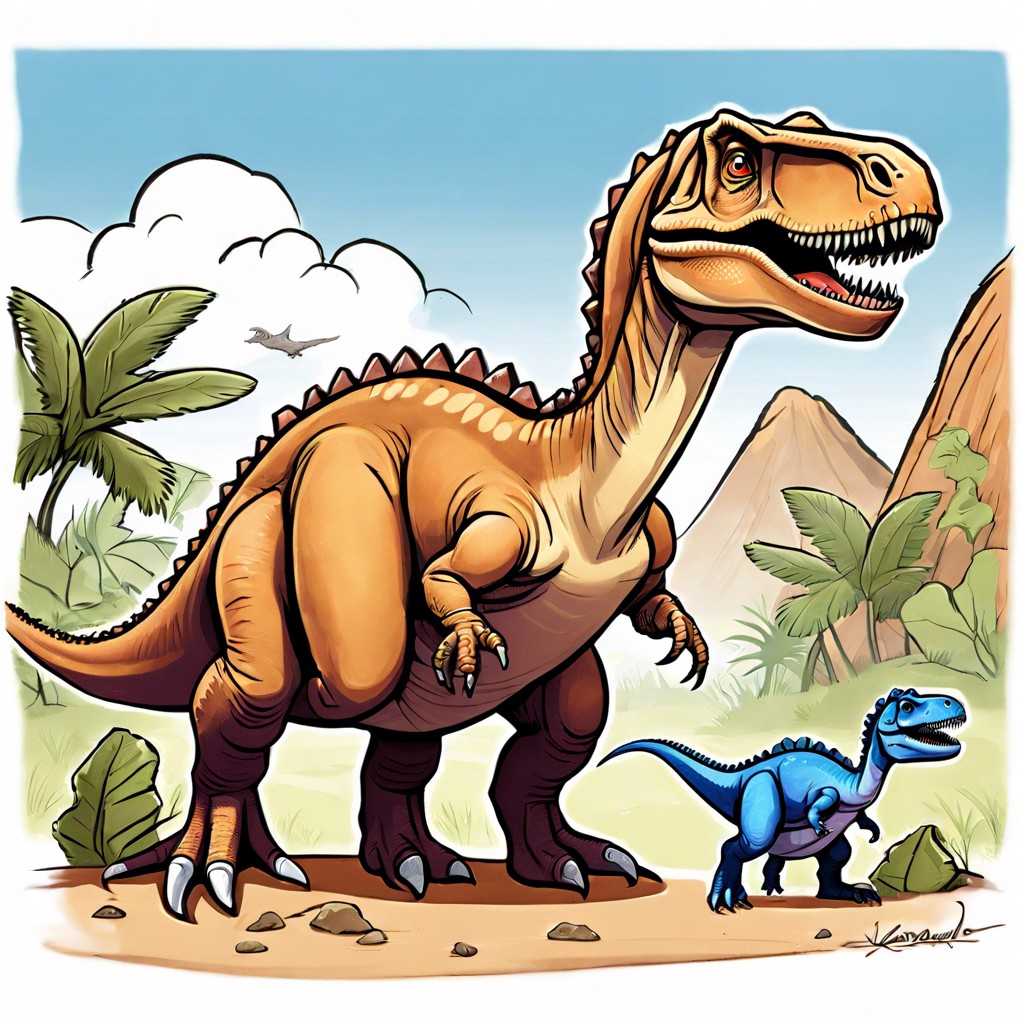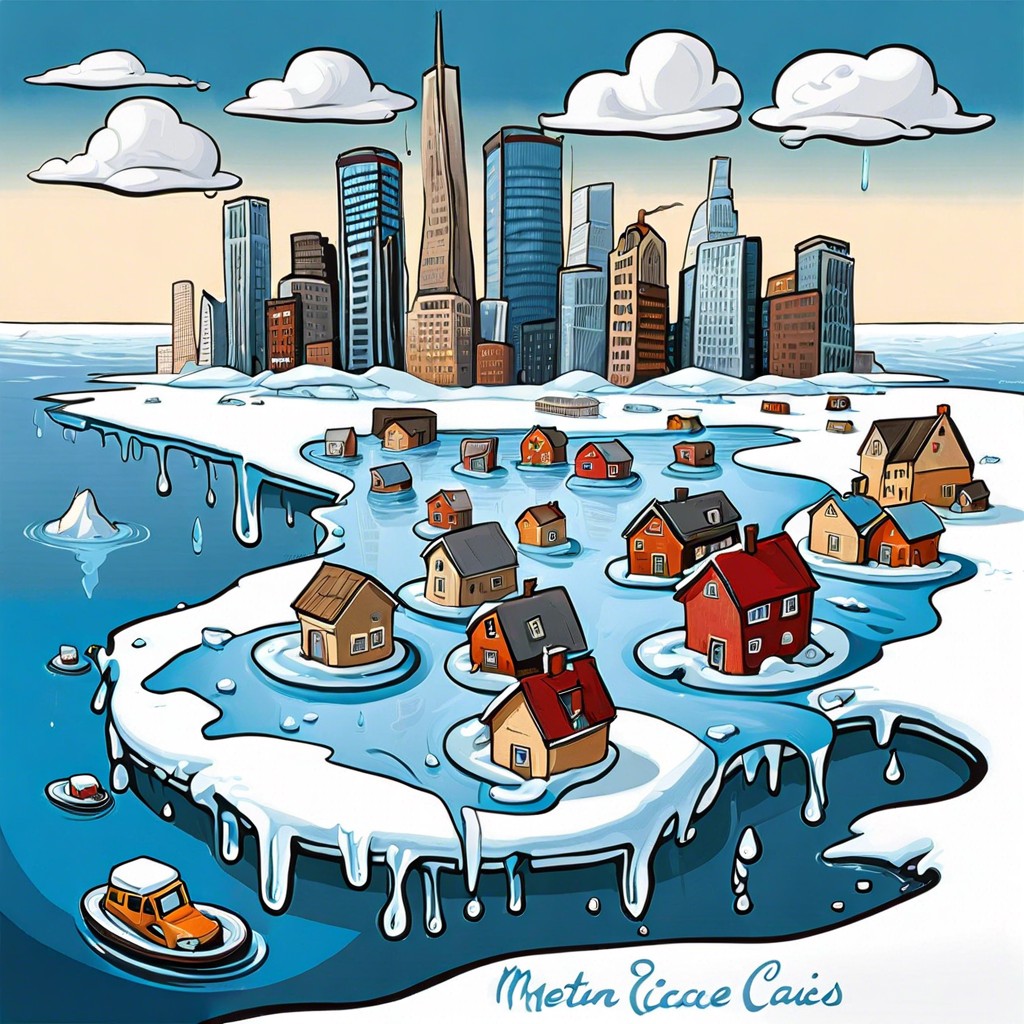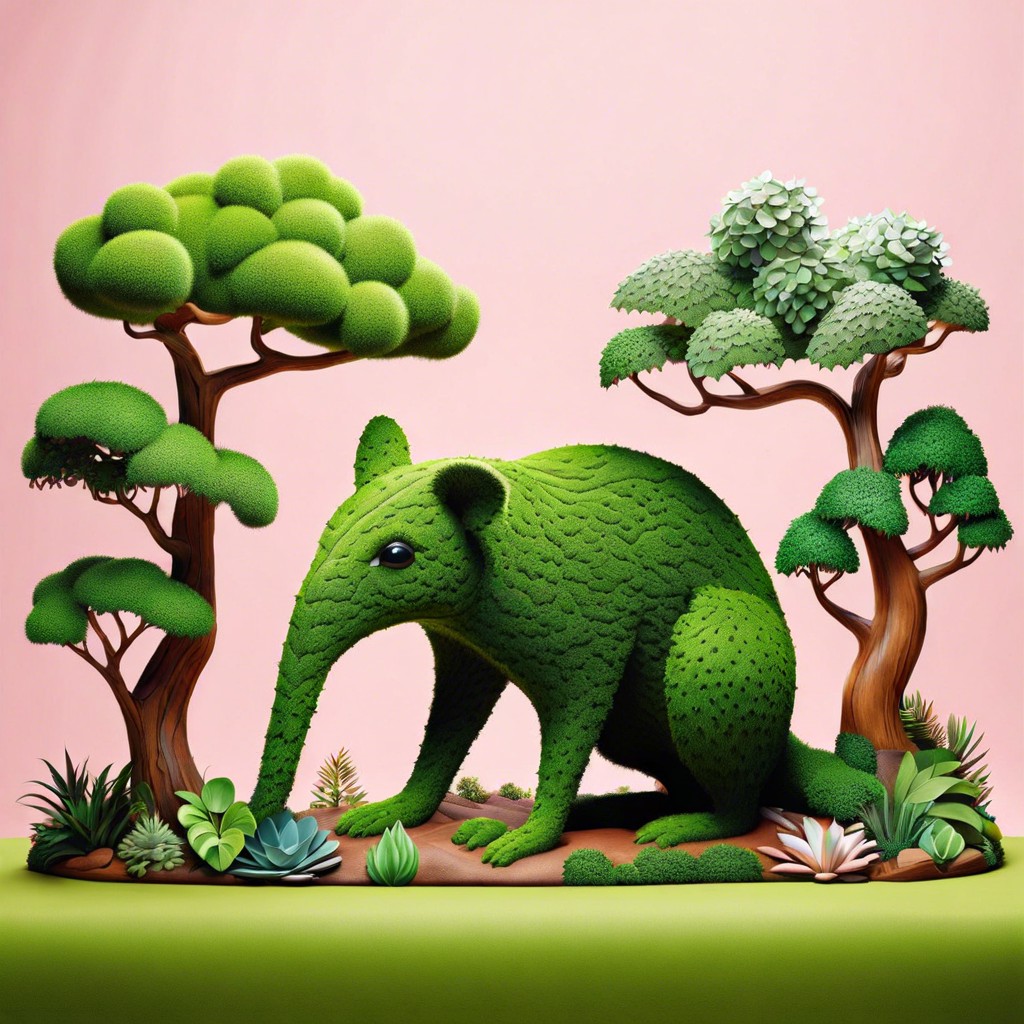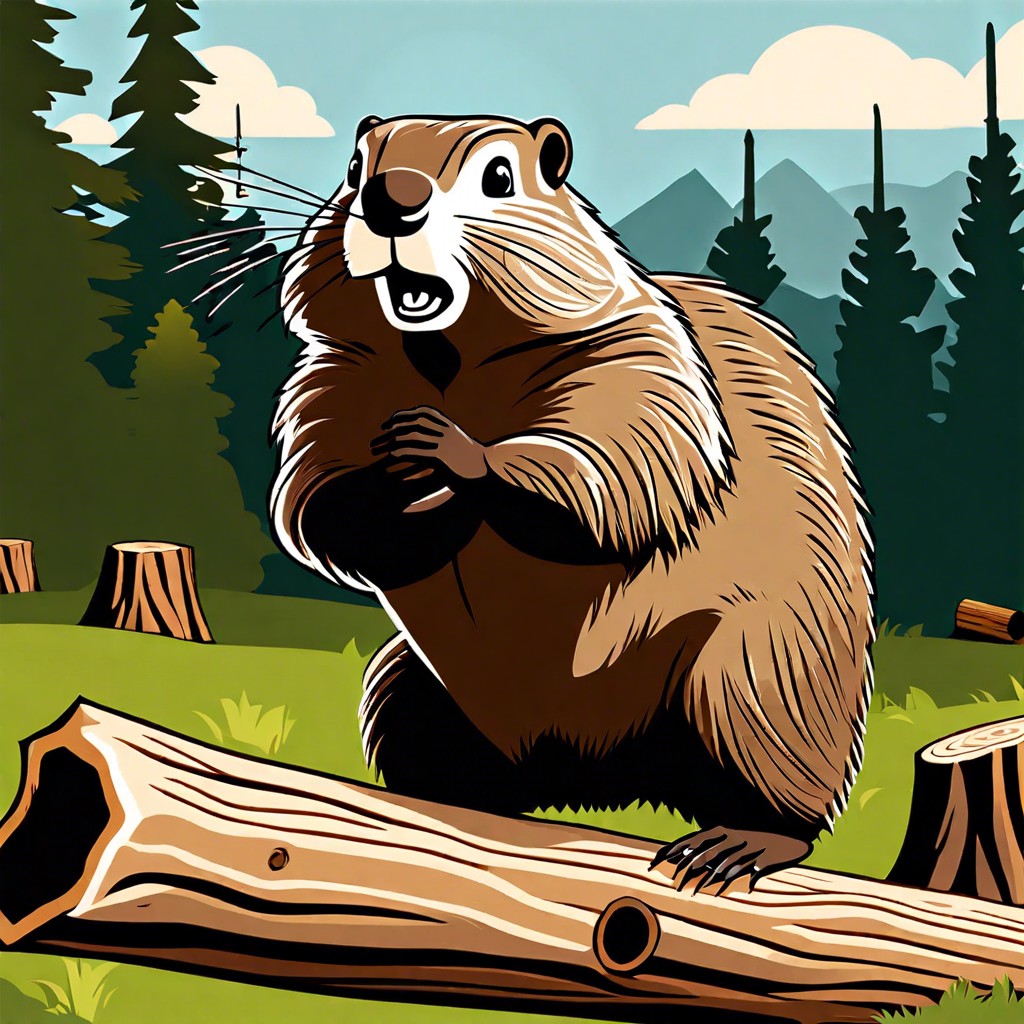Imagine a world where dinosaurs roam alongside humans, influencing our ecosystems, architecture, and lifestyles.
Imagine a world where T-Rex still reigned supreme and velociraptors skulked in the forests. What would this dino-filled utopia mean for our evolution, our cities, and even our gadgets? From potentially derailed human history to the most unexpected twists in ecological balances, we’ll dive into the mind-boggling changes that our world might have seen if dinosaurs had sidestepped extinction. Ready for a wild ride through a Jurassic reality check? Buckle up!
Key takeaways:
- Evolutionary Biodiversity: Diverse species, wacky defenses, man-eating plants, and survival challenges.
- Impact On Human Civilization: Dino-proof structures, agricultural hurdles, new social structures, and adventurous transport.
- Ecological Dynamics: Monstrous trees, flipped predator dynamics, marine reshaping, less birds, and thriving insects.
- Technological Advancements: Tougher vehicles, dino-resistant structures, diversified energy sources, new job markets, and innovative solutions.
- Changes in Historical Events: Triceratops battles, altered conquests, delayed explorations, accelerated science, and reshaped political landscapes.
Evolutionary Biodiversity

Imagine a world where trilobites are as common as squirrels. Picture a backyard with velociraptors instead of pigeons. Dinosaurs still roaming the Earth would cause the evolutionary tree to look like a mad scientist’s doodle.
First, species diversity would explode! Mammals might not have dominated, meaning no kangaroos, no humans, no Netflix.
Next, imagine the evolutionary arms race. Predators like T-Rex would push prey species to develop wild and wacky defenses. Think armor plates—even more spikes.
Oh, and let’s not forget the tiny critters. Bugs and plants would evolve differently too, possibly making arachnophobia the least of our worries. Ferns could be man-eating traps!
Finally, our own ancestors would be just another meal option. Survival of the fittest on steroids!
Impact On Human Civilization
Imagine commuting to work on a Monday morning with a T-Rex snarling at you from the bus stop. It’s not just traffic jams anymore; it’s prehistoric road rage! The presence of dinosaurs would have redefined where and how humans settle. Skyscrapers? More like “dino-proof” bunkers.
Architectural designs would include escape routes, reinforced structures, and probably lots of tranquilizer darts. Urban planning would need an entire department dedicated to “Dinosaur Management.”
Agriculture would face its own Jurassic challenges. Forget rabbits munching on your crops—try herds of Triceratops turning fields into salad bars! Farmers would need innovative solutions to keep their produce from becoming dino-snacks.
Social structures might evolve differently too. Clans or tribes could center around defense against the common ‘enemy,’ leading to a sense of unity through necessity. But don’t forget the ‘dino-wranglers‘ emerging as new-age heroes, perhaps even celebrities.
Transport would be radically different. High-speed rail? More like high-speed dino-dodge. Road infrastructure would have to withstand the stampede of mega-fauna. Air travel might gain popularity—until pterodactyls become sky-high hazards.
In essence, human civilization would adapt but under constant Jurassic ‘oversight.’ Life would be one prolonged action-adventure, minus the popcorn.
Ecological Dynamics
Imagine a world where Tyrannosaurus rex and Stegosaurus roam free—ecosystems would look like a Jurassic Park on steroids. Trees might grow to be even more monstrous, just to avoid being munched on. Our delicate deer and rabbit populations? Likely dino snacks.
Predatory dynamics would be flipped. Big cats? Puma who? Apex predators would bring down populations of prey animals quickly, leading to more rapid cycles of boom and bust.
Marine ecosystems would also face upheaval. Ancient, oversized fish and marine reptiles could outcompete sharks and whales, reshaping entire oceanic food chains. Coastal areas would see new giants lumbering through mangroves.
Birds might never spread as widely. With pterosaurs hogging the skies, our feathered friends could have remained an afterthought. Rainforests would buzz less with birdcalls and more with prehistoric roars and shrieks.
Fungi and insects, though, might flourish. As massive creatures churned up the landscape, they’d create endless opportunities for decomposers and creepy crawlies. Soil health? A real mixed bag, thanks to all that trampling.
The weather could also play hide and seek with plant life. Blocking the sun with their massive sizes, dinosaurs might create microclimates beneath their bellies. Plant species could evolve differently, awaiting their turn in the rare slivers of sunshine.
Technological Advancements
Imagine the first wheels designed to outrun a Velociraptor or bridges sturdy enough to resist a T-Rex’s stomp. The race for better, faster, and stronger would be the norm. Forget slow Internet—people would demand high-speed connectivity to coordinate anti-dino measures.
Automobiles would likely be built tougher, perhaps even armored. Environmental adaptations could lead to cities fortified against gigantic trespassers. Skyscrapers with dino-proof basements? Why not!
Furthermore, energy sources might diversify quicker; solar panels hardened like dino-scales or wind turbines towering above the brontosaurs.
And yes, who could ignore the potential for a new job market? Dino-wranglers and advanced paleo-biologists would be in high demand. A world where drone surveillance keeps tabs on rogue Triceratops? Intriguing, right?
In short, technological progress would cater to coexistence with colossal creatures, fueling a blend of creativity and necessity. Sanitation engineering with dino-friendly waste disposal units, anyone?
Changes in Historical Events
Imagine Julius Caesar riding into battle atop a Triceratops. The course of empire-building might have looked dramatically different. Military strategies would evolve to harness these colossal creatures, and history’s defining conquests could shift.
Trade routes carved through T-Rex territory? Terrifying and fantastic. Environmental obstacles posed by giant lizards might have led to delayed explorations, pushing Columbus’s voyage to centuries later.
And how would Einstein’s theory of relativity fare in a world where a velociraptor greeting pedestrians is the norm? Scientific milestones might accelerate as humans adapt tools and technology to navigate a shared world with dinosaurs.
Political realms could also see a shake-up. Instead of royal falcons, imagine ornate pterodactyls delivering messages. Not to mention, entire civilizations might reformed to coexist with these behemoth neighbors, altering historical overthrowing and alliances unpredictably.
Having giant Jurassic beasts certainly propels human history onto a playground of fascinating what-ifs and maybes.




